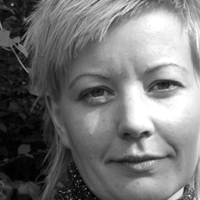
We're making steady progress here – the only thing that bugs me is that the new ScreenFonts keeps getting pushed forward by the TDC2 reviews. We've had the introductory overview post, Type Systems, Text Faces, and now it's time for Display Type. Reviewing type takes extra time, and honestly I'd forgotten how interesting and fun that is. Simply looking at type a bit longer, a bit harder, checking references and precedents, trying to shape an informed opinion, and translating that into words. Maybe this was the right time to start injecting some Bald Condensed-ness in The FontFeed. I do think type design can use critical review, just like it benefits other arts – literature, theatre, film, fine arts, and so on. This sentiment was echoed by quite a few friends and acquaintances.
This is the difficult episode, because in my opinion the Display Type category holds at least one clunker and one puzzling selection. Already I had some problems with the fact that none of this year's terrific sans serifs nor scripts had received an accolade. But when you see what did win, well… that sure left me scratching my (bald) head.
Deliscript
Unlike most type designers Michael Doret comes from a background of doing exclusively hand-lettered assignment and logo design work. It is only in the last few years that he's tried his hand at font creation. So when he does approach font design, it's from a slightly different perspective than others in this industry might take. As the style Michael has become known for is bold and colourful letterform work, it shouldn't surprise anyone that he approaches type design in a similar manner. When he starts a new typeface he usually tries to come up something that hasn't been done before, something that he personally would like to see as a font, and that he would love to hand–letter in an assignment, if given the opportunity.
The Canter's Deli neon display that inspired Deliscript, at night. Photo by Chris Lott
Living in Hollywood Michael, like many others, is a frequent visitor to Canter's Deli – an historic Los Angeles institution. One day he noticed their very familiar neon sign in a way that he hadn't before – as a jumping off point for a new typeface that would say a lot about who he is. When Michael started to develop it, somehow it morphed into something that wasn't exactly what was on the sign (but not terribly different either), opening up the possibility to do some things that he hadn't yet seen in any other type design. Principal among those features was the ability to extend the crossbars from the lower case "t"s, made possible after enlisting OpenType programming assistance from Patrick Griffin of CanadaType, and they help make possible typesetting that approaches the look and feel of handlettering. Michael also borrowed some features (principally the variable length tails) from an earlier design of his called Metroscript. In a similar fashion, and as a nod to Canter's, the new geometric script face was named Deliscript.
I tried to give Deliscript a unique flavour. Personally I am not very big on swirly, delicate scripts – and this shows in both my lettering work and this typeface. With Deliscript I wanted to evoke my memories of growing up in Brooklyn in the '50s, the storefront signage and showcards, the larger than life banners of Coney Island, and the excitement of Times Square's immense billboards.
Recently, in a bizarre case of art imitating life – imitating art, Michael was contacted by the Canter's Deli family, who had run across Deliscript on the internet. They figured out who had designed it and, deciding that he might be one of the few people who understand what they're about, have asked Michael for help in polishing up their image. Thus this story comes full circle, and Deliscript may have just found its perfect home!
Detail of the Canter's Deli neon sign, daytime. Photo by cyan79
Deliscript is a nice typographic interpretation of the typical 50s style, which has always been popular. The typeface immediately conjures up all the right associations of Las Vegas, American diners, old movie theaters, vintage automobile emblems, and so on (to my European eyes at least). Michael Doret made the right decision to not stick to the source material too religiously and let the design lead its own life. This made the alphabet evolve into a much more useful typographic tool. The extendible crossbar on the "t" and the six different styles of tails in 20 variable lengths each are perfect for recreating that recognisable vintage neon/chrome atmosphere. The fonts also include a couple of catch words – only in English and not as many as FF Catch Words from the FF Moderne Gothics, but still useful for creating attention-grabbing headlines and logos.
While I do like the general appearance and style of Deliscript, and recognise its commercial potential, I am unsure about the finer details in the character shapes. Then again, it could be the connected linear baseline is playing tricks on my eyes. Some curves and joins seem rather stiff, and the weight distribution and contrast in the character strokes appear a little off in some parts. I have the impression that Michael could have strayed even further from the source material, made the shapes more flowing and softened up the baseline as well, to achieve more fluidity in the text image.
Fugu
When Baka and Baka Too did very well commercially (Baka was named the Best Cursive Rough Script in 2005), Neil Summerour shied away from doing any more rough, handwritten scripts. A few years passed and some early sumi-e brush 'doodles' kept appealing to him. Neil initially thought this new face would fall under the Baka mantle and just become a new sibling, but as brush hit paper over and over again, the letters took on quite a different personality.
Neil found that his new type design turned out to be far more expressive, smooth and rough, tasty but sticky. This dichotomy demanded a new name. The rough and smooth texture suggested the name Fugu – oddly delicate while rough and functional.
Fugu is a departure from many brush calligraphic lettered inspired typefaces of recent years. It is not intended to be perfectly flowing or over-the-top. It is the product of sumi brush on cotton paper and written in a deliberate casual pace. Each letterform relies on how the hand reacts from character to character. The interplay is instinctual and deliberate with the resulting forms taking on a more visceral appearance on the page and screen. The texture is "real", devoid of software trickery or plug-ins. The casual style is refreshing and contemporary – further expanded with alternate glyphs, swashes and ligatures found in both the type and glyph palettes.

Fugu was designed using a sumi-e brush for Japanese style ink and wash painting. Photo by Jennifer Pack
Now I hate to have to say this – I don't think this is a good design. I'm really sorry for Neil because he sounds like a genuinely nice guy who was very friendly in his e-mails. I'd have preferred it was purely a matter of personal taste, alas I fear Fugu's ails run deeper. Neil says he wrote the letters in a deliberate casual pace, and therein may lie its problem. A good script should either be delicate, or energetic, or elegant, or aggressive, or swooping, or naive, or intricate, but unfortunately Fugu is neither. Strangely enough, for a script with a number of offbeat characters it suffers from lack of personality. There's a weird contradiction going on: the character shapes look overly designed, and at the same time not sufficiently enough. The face lacks energy, a sense of direction. The angles, the shapes, even the scale of certain letters seem rather haphazard to me. It is as if so much attention was spent on the texture and specific details of the individual letters, that Neil lost the overview of the character shapes and the alphabet as a whole. To use a metaphor – my wife and I have a dear friend that for some reason can't cook. Even when she religiously follows a recipe, adding all the correct ingredients, in the proper amounts and at the right time, with the correct seasoning, the end result never tastes quite right. It's as if she doesn't grasp the essence of cooking. Similarly, ultimately, Fugu gives the impression to be a barely consistent collection of separate characters, not a typeface.
Lavigne Display
Lavigne Display is the first release of a type family aimed at publications such as interior design and women magazines – anywhere a touch of distinction is to be desired. In the opinion of its designer, glossy magazines have been boring us with the same type families for years, with only a small group of fonts being used to denote refinement and sophistication. The philosophy behind Lavigne is to achieve the high contrast and other refinements observed in classic 'modern serif' typefaces, without borrowing too much from history. Accordingly, its main source of inspiration was careful observation of pointed-pen calligraphy and sketching.
Ramiro Espinoza planned Lavigne as an ambitious family consisting of two sub-families – Display and Text. Its range will cover every single instance in the type hierarchy required for modern magazine design. The six distinct styles in the Display version are published in OpenType format, featuring small caps and four sets of numbers (proportional old style, tabular old style, proportional lining and tabular lining), as well as matching currency symbols.

Lavigne Display in use in a magazine spread
Lavigne is quite an interesting design, and a beautiful one at that. Ramiro infuses a warm, almost painterly quality into his stately letter forms. The structure of the characters is decidedly Didone, yet the brush-like details remind me of Underware's Dolly, Nikola Djurek's Tempera Biblio, and Tomas Brousil's Dederon Serif – I love all three of them. It's a real treat to see Ramiro take on the Didone model with a Latin American sensibility, and then infuse it with a typical Dutch flavour. When looking closely you can distinguish the Type]Media influence in many of Lavigne's characters. Lavigne offers a welcome alternative to comparatively colder, more mechanical interpretations, and should do very well in publication design.
Narziss
Narziss should be equally at home in fashion and style magazines. Since designing Mommie Hubert Jocham gradually became more interested in lush ornaments.
I was always fascinated by Tony DiSpigna's (one of Herb Lubalin's partners and co-creator of ITC Lubalin Graph and ITC Serif Gothic) lettering in U&lc, so I designed an earlier typeface, Mommie, with very high contrast. Narziss is an upright neoclassic serif with very high contrast, too.
Narziss is an exploration of the possibilities for adding swashes to roman (upright) designs. Neoclassic typefaces are ideally suited for this, because the dramatic stroke contrast makes the fine hairlines perfect for adding swirling extensions. Narziss comes in three variants. The basic style is a neoclassic roman face –nbsp;this style is also known as Didone or Modern Face, like Bodoni – with extreme contrast. The stem to hairline ration in the Regular weight already is 25:1, so it is best used very big – this design is most graceful in headline sizes. The Narziss Drops variant features drop-like finials on the stroke endings of certain characters, and Spencerian swashes sprout from of the hairlines of Narziss Swirls and overlap with the neighbouring characters.

Narziss in use in a page in W magazine, August 2009.
Hubert Jocham designs squarely for editorial design, principally magazines. This is noticeable in almost all of his type designs with their many weights and coordinated variants, as attest his most recent type systems Verse and Voice. I think I've mentioned it before, but I'll say it again: he is something of an acquired taste. I guess you either like him or you don't. Hubert doesn't do middle-of-the-road, which definitely speaks in his favour. The typographic solutions he comes up with can be quite unusual, and his willingness to experiment with certain typographic conventions in commercial typefaces offer a refreshing alternative to mainstream type design. If you agree to leave your preconceptions behind and enter his mindset, this experience can be very rewarding.
Narziss is no different. Hubert Jocham's interpretation of Didot holds a few surprises. The apparent mechanical, detached look of the regular style is counterbalanced by swooping curves in characters like "a", "g", and "y", dramatic thinning in the transition from stem to ball terminal in "f" and "j", and pronounced spurs in "b" and "q". Hubert then ups the ante with the Drops variant, injecting a mercurial fluidity and adding ball terminals on a number of key characters. Narziss Swirls, the final variation, is a no holds barred swash-fest, with swirling hairlines protruding from the letters. I initially really liked their randomness, type run wild, like exuberant vines growing unchecked in a Victorian garden.
Yet discussing the swirls with some type designer friends – you know, people who studied typography and actually know what they're talking about – made me re-evaluate my review. Their opinion is that the swirls are too geometric and look out of place, as if they were stuck on the characters instead of being natural extensions. This contradicts the organic curves featured in the characters proper (one may not see this right away, but Didones are actually quite fluid). They think Narziss works very well without the attachments, which would have been more appropriate if they had more of a penmanschip logic to them. By the way, the people I talked to claim to be fans of Hubert's work in general. Maybe this is why they are a little disappointed in Narziss Swirls.
Retiro PTF
Retiro PTF is a custom typeface designed with the purpose to lend a distinct voice, a unique look and personality to Madriz – named after a lovely park in Madrid. This bi-annual, bilingual Spanish–English city magazine is distributed in high class hotels, airports, and other hip places in Madrid, Spain. It is a guide to Madrid life and culture for residents and tourists alike; a witness to the contrasts between the city's modernisation and its traditions. It lists events, activities, and things to do, as well as offers articles about fashion, interior design, gossip, and so on. The project started rather unusually. Retiro PTF was commissioned by the publisher, rather than an art director. Madriz magazine wanted stereotypical a Didot similar to the nameplates of well-known women's magazines: L'Officiel, Vogue, Harper's Bazaar. The design of Retiro PTF is inspired by the visual style of those glossies, with a dash of Spanish vernacular. Jean François Porchez created an imaginary Castilian/Andalusian Didot (this kind of typeface doesn't exist in the Spanish history of typography). The strong association with Vogue – "the world's most influential fashion magazine", dixit book critic Caroline Weber – is married to the ornamental style characteristic to the cities in the south of Spain, which is reflected in the numerous alternates and ligatures in the typeface. This resulted in a daring interpretation of Spanish typography: severe, austere, and yet full of life.
Originally designed in 2006, Retiro PTF was taken on an epic test drive spanning six issues. As a result the typeface was in beta version until autumn 2009. The final version was fully revised. Many variations were added to the original design, and undesired ones removed, in order to achieve the highest level of excellence in term of editorial setting. This exclusive typeface will be available to the public once the exclusivity runs out in 2015.

Retiro PTF in use in Madriz magazine.
I already liked Retiro PTF the very first time I saw the specimens that had been submitted for TDC2, and the photographs of the typeface in use in Madriz magazine irrevocably won me over. What I like most about Jean François' "Castilian/Andalusian Didot" – no too shy to rewrite typographic history – is the way it balances decorum with exuberant ornamentation. This typeface is an art director's/typographer's dream, with a myriad of alternative choices to spice up the setting. You can clearly see that it is the outcome of an intense collaboration between type designer and publisher. On the one hand Retiro PTF is perfectly equipped to tackle any situation or design problem in a magazine spread. The photographs above on the other hand attest that the designers display a thorough understanding of its possibilities, and they use it to full effect. I love it how the ornamented variants are inserted quite unpredictably, in exactly the right doses. It is as if these stately characters suffer from a elegant kind of Tourette syndrome, and this makes the setting so exciting and fun.
On a side note – and this has nothing to do with Retiro PTF – am I glad that I can finally stop using the "Didone" reference now. How many have there been? Four? I felt like I was repeating myself all the time; I almost got bored of my own writing.
Rum
Trine Rask is a graphic designer who teaches type design at the Danish School of Media and Journalism, and the Danish Design School in Copenhagen. Furthermore she heads workshops, gives talks, and does consultancy in the field. She describes Rum Black as "a black and powerful face, but still very soft and friendly." Rum – the Danish word for "space" – was designed when Trine still was a typography novice, before she knew much about type design. The Regular weight was originally created for a Scandinavian competition in 2001. It had to work well in a variety of sizes, both in print and on screen. Trine concentrated on the counters, making them as open as possible to achieve optimal legibility. Rum eventually won second prize in the competition.
Trine went on to study Type]Media at KABK. After her studies she improved the regular weight and designed a black version. This would enable her to generate a family through interpolation. In the end only Rum Black survived, but soon it will be expanded to a family. It already has a soft variant with slightly rounded corners.
Rum was designed from the inside out, with a strong focus on the counters. The shapes of those counters are repeated throughout the typeface, which results in a consistent, strong text image in small and especially display sizes. The design is very simple, with delicate details. Rum has a large character set including alternate characters offering the possibility to create a softer and rounder text image. The incorporated delicate swashes work like discreet periods at the end of words.

Rum Black in use on a Museet for Samtidskunst poster
To be honest, Rum doesn't do much for me. Seeing it made me go "meh". Despite the interesting concept of concentrating on the counters and designing from the inside out, I find the end result looks very safe, very 80s, like an alternative to Robothon I was almost literally salivating when examining the posters with thrilling and diverse student work displayed in the hall outside the auditorium. In that perspective Rum Black is a bit of a let-down.

Urbana Lnd
Designing Urbana Lnd was mostly about looking very closely at something that already exists, extracting parts and transferring them into a new context. Birgit Mayer confesses that she was not even aware she was designing a typeface when she first started engaging herself with its forms. The story of Urbana Lnd starts in an aeroplane. One day, when flying over London and looking down on the city, Birgit discovered that the London Road System is full of beautiful little ornaments. Yet this thought was abandoned, and it took almost a year before she remembered it. Birgit looked up a road map of London. While examining the intricate patterns of roads she started to extract portions and fragments she liked. Before she fully realised it, she started finding shapes that could easily be interpreted as letters. That's when she decided to try to assemble a complete character set.
Actually, I was not even aware that I was in the process of designing an alphabet when I gradually became more and more involved with these forms. From the onset I decided not add anything, or change the existing road structure. The only liberty I allowed myself was to omit entire streets, or portions of the ones I kept. The most difficult part was making all those individual letters fit and work as an alphabet, which involved a lot of scaling. I also had to dismiss several letters and find new ones whenever they would not function together.
What I like most about the end result is that it reveals a very particular design process – a kind of generative design – which is much more akin to exploring and discovering than it is to "pure" artistic creation.
Random shapes found on the London Road Map.

Evolution of the letter A.
Evolution of the letter V.
This last selection left me puzzled. I am fascinated by generative design and appreciate people thinking out of the box, experimenting with form and conventions. Nevertheless I think this alphabet doesn't belong in the list of TDC2 winners. You could argue it's a novel idea, granted, yet it simply doesn't hold up past the initial surprise. Even disregarding the question whether it looks good or not, we have to realise this was awarded a Certificate of Excellence in Type Design. I don't want to belittle Birgit's work, but there is no type design involved here, beyond making decisions regarding the scale of the found shapes, and if to include specific portions of streets in the letter forms. And in the event of the jury wanting to send out a message to the type design community, saying they should include more experimentation in their work, I don't think this is appropriate in the context of this competition. I have been in a similar situation myself, when at some point in the judging we considered awarding an unlikely candidate, as a signal, and we had a very good reason. However after lengthy debate we couldn't help but agree that a type design contest can only have one outcome. The best type designer wins, period.








